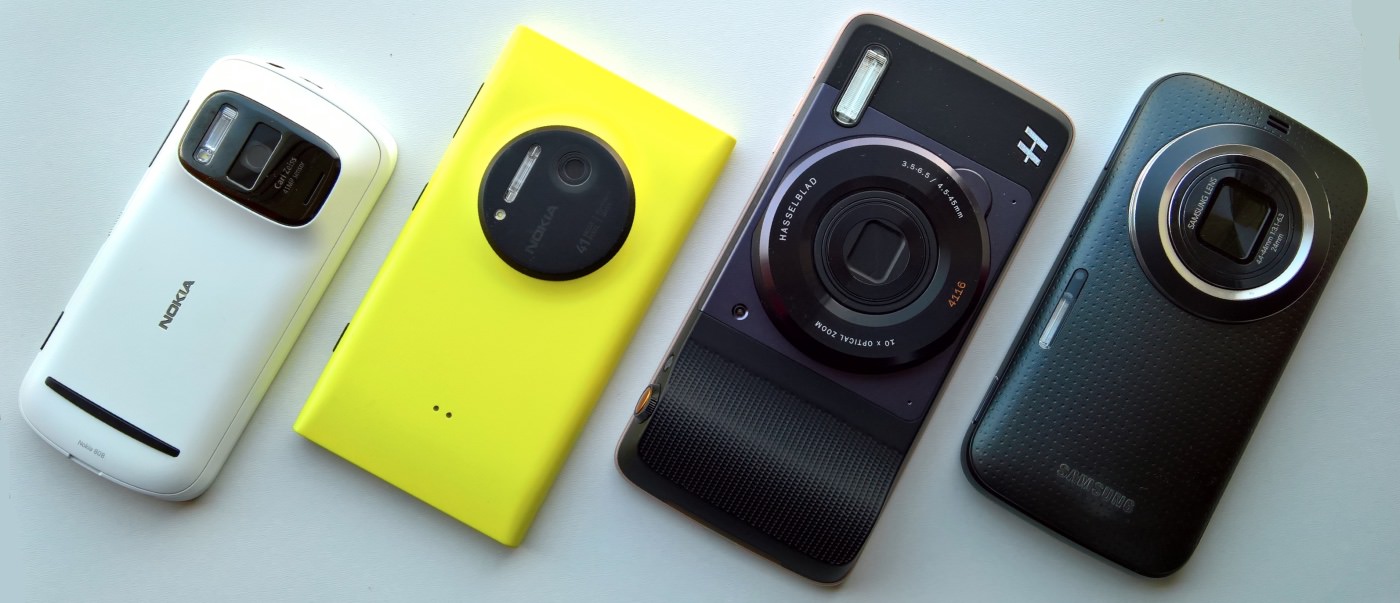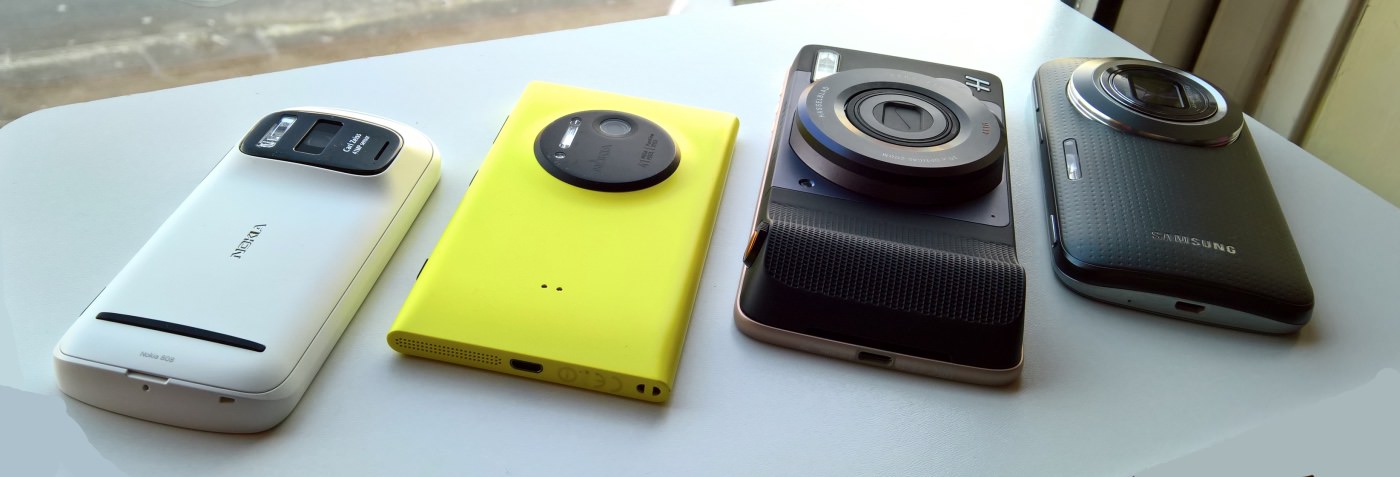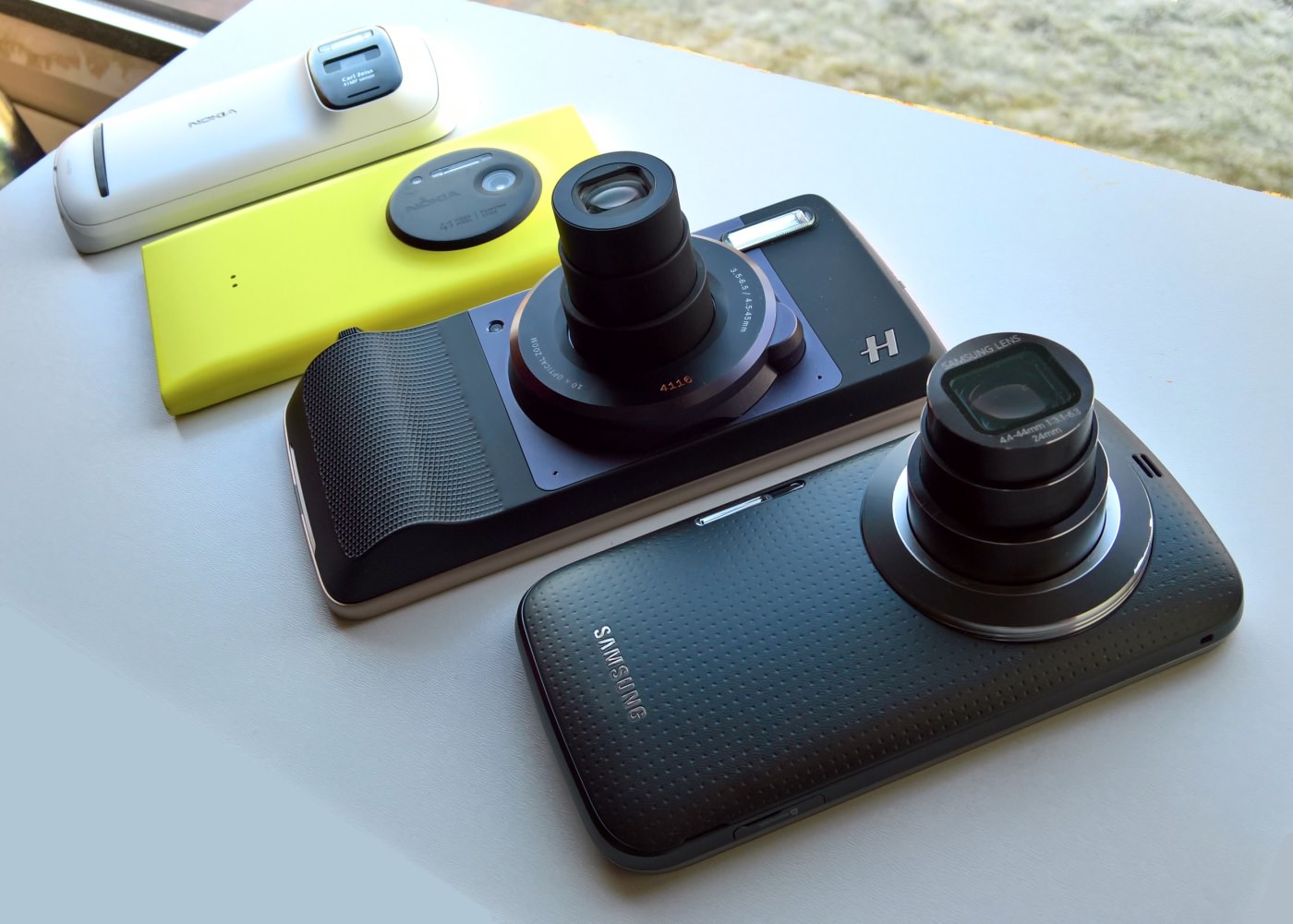Why am I making a fuss over both zoom and Xenon flash? Because they dramatically enhance the range of subjects and scenarios for taking photos. After all, every standalone camera, every DSLR, all have both zoom and Xenon too - so it's puzzling that phone manufacturers have steered quite so far clear away from these technologies. I realise that there's a slight increase in bulk and power requirements, but I'd have still expected that there be a few more camera-centric smartphone offerings. Than four. Over five years. (I don't count units like the Panasonic CM-1 or the Kodak Ektra because they had neither zoom nor Xenon.)
- Why zoom? As in 'lossless' zoom, implemented on the Nokia 808 PureView (running Symbian) and Nokia Lumia 1020 (running Windows Phone 8.1), and optical zoom, implemented here on the Samsung Galaxy K Zoom and Motorola Moto Z 'Hasselblad' (snap-on) mod. Because you can get optically closer to your subject, providing more detail and more intimate framing.
- Why Xenon? Because shots of pets and human beings in low light can come out perfectly sharp, 'frozen' in motion. I realise that this isn't always to everyone's taste, since the flood or pure white light can also affect the atmosphere (e.g. at a party), but sometimes when you're grabbing a moment at an evening event then only Xenon will do.
Step one then - comparing the physical propositions. (Step two will be to take these camera phones out into the world and see how they perform relative to each other, and this will take a day or two.) The Hasselblad solution is by far the bulkiest, but this is natural because there's not only the bulk of a telescopic 10x zoom mechanism, there's also the added bulk from having separate phone and camera portions (the 'mod' pulls off and you can swap it for extra battery or a large stereo speaker etc.)
Plan form factors aren't that different, apart from the oldest, the Nokia 808, with its relatively tiny 4" screen (by today's standards!), though all phones are presented here camera-side first:

Aside from the 'DSLR-like' 'grip' on the Moto Z plus Hasselblad, the phone form factors don't seem too dissimilar at first glance. However, start to introduce a plan perspective and the difference in thicknesses is immediately apparent:

And you thought the Nokia 808 was chunky back in 2012...
In fairness, the detachable nature of the Hasselblad Moto Z Mod means that you're not holding the full form factor all the time. You'd typically carry the Mod in your pocket (it comes with a case) and clip it on when the time came to take some adventurous photos. Of course, if you're going to carry something in a pocket then why not a small standalone camera in the first place? You do get the immediate sharing via the Moto Z smartphone this way round, but the solution does seem a little overkill.
The all-in-one Galaxy K Zoom seems svelte and elegant by comparison, while the Lumia 1020 is positively the looker in this group, offering a vastly slimmer profile with almost no compromises beyond that 2.5x limit on (lossless) zoom. (If you want - for personal preference - more of a DSLR grip for the humble 1020 then this accessory exists.)
And - gulp - this is all with the cameras not activated. Boot the Camera apps up and the electronics swing into action. The Nokia 808 and Lumia 1020 mechanical shutters power up and you can see the lenses, the Hasselblad Mod and the Galaxy K Zoom power up their telescopic lens systems, etc. And, to emphasise the difference further, I've set the latter two to their 10x zoom positions:

I'll return to how effective the combination of optical zoom and OIS is (in all cases bar the Nokia 808) in the next feature, pitching results head to head across a nuber of use cases.
Shooting the hardware comparison above from a slightly different angle, the Nokia 808 and 1020 look more comparable in terms of size, but it's all in the use of perspective - in the hand, the Lumia 1020 still feels 'right' to me. In every regard, even with a grippy shall case on - this may indeed be that I'm simply so used to the 1020 after three years of use, or it may be that the bulky newcomers are just that - too bulky for mainstream use.

The Galaxy K Zoom is so close to being useable day to day, I owned one for several months when it came out in 2014, two years after the Nokia 808 (2012) and a year after the Lumia 1020 (2013). The K Zoom always felt too big, heavy and thick in the pocket and I never found a belt holster large enough to take it. Plus, in hindsight, its specifications were Nokia-esque in their shortsightedness, with far too little internal storage - the K Zoom is stuck on an Android OS version from its launch year, sadly, abandoned by Samsung.
I seem to be in the possession now of a litany of camera-centric phones which have been abandoned by their manufacturer. I'm thinking also of the Symbian-powered Samsung G810, which also featured optical zoom and Xenon flash, back in 2008, even the Nokia N93 and N82, even earlier. Manufacturers persist in toying with camera-centric phones and never putting all their weight behind them in terms of design and then marketing. The obvious conclusion is that the mass market, the bulk of sales, are to people who simply don't need (or know how to use) a high end camera in their phones. For them, a 'good' camera is good enough.
Which is a shame from my point of view and I'm sure I'll find a few sympathisers here. Anyway, I'll have a use case photo shoot out between the four contenders here very shortly. Anyone think I should also throw the Lumia 950 into the mix, as a mass market top end data point? Comments?
